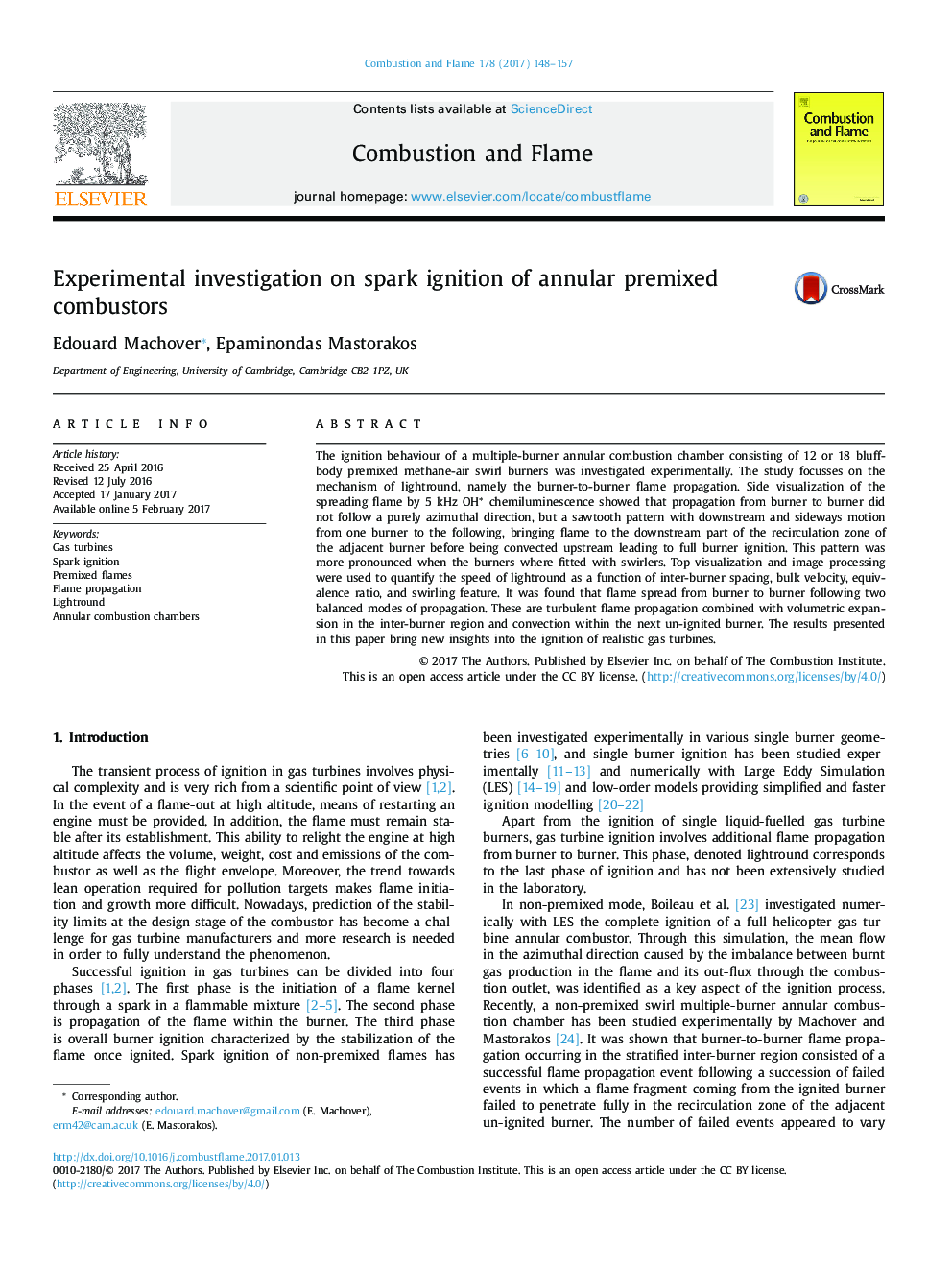| Article ID | Journal | Published Year | Pages | File Type |
|---|---|---|---|---|
| 6468578 | Combustion and Flame | 2017 | 10 Pages |
The ignition behaviour of a multiple-burner annular combustion chamber consisting of 12 or 18 bluff-body premixed methane-air swirl burners was investigated experimentally. The study focusses on the mechanism of lightround, namely the burner-to-burner flame propagation. Side visualization of the spreading flame by 5Â kHz OH* chemiluminescence showed that propagation from burner to burner did not follow a purely azimuthal direction, but a sawtooth pattern with downstream and sideways motion from one burner to the following, bringing flame to the downstream part of the recirculation zone of the adjacent burner before being convected upstream leading to full burner ignition. This pattern was more pronounced when the burners where fitted with swirlers. Top visualization and image processing were used to quantify the speed of lightround as a function of inter-burner spacing, bulk velocity, equivalence ratio, and swirling feature. It was found that flame spread from burner to burner following two balanced modes of propagation. These are turbulent flame propagation combined with volumetric expansion in the inter-burner region and convection within the next un-ignited burner. The results presented in this paper bring new insights into the ignition of realistic gas turbines.
